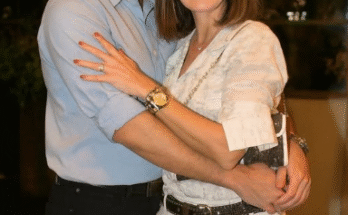nside Tupac’s Final Flights: The Untold Story of Suge Knight’s Private Jet
Few names in the history of music evoke as much cultural weight and enduring mystery as Tupac Shakur. A poet, actor, and revolutionary voice, Tupac’s career burned bright but ended tragically when he was gunned down in Las Vegas on September 7, 1996, at just 25 years old. In the decades since, fans and historians have pieced together fragments of his final days, trying to understand the sequence of events that led to his death. While much has been written about the infamous drive down the Las Vegas Strip, less attention has been paid to the quieter, more private details of those final days—particularly Tupac’s travels aboard Suge Knight’s private jet.
Behind the glitz of Vegas and the violent end, those flights reveal a story of ambition, tension, and a man caught between superstardom and mortality.
The Suge Knight Connection
Suge Knight, the co-founder and CEO of Death Row Records, played a central role in Tupac’s career after 1995. At the time, Tupac was languishing in prison, facing mounting legal troubles, and his career seemed in jeopardy. Suge offered him a lifeline: sign with Death Row Records, and in return, Suge would pay his bail and secure his freedom. Tupac agreed, and almost overnight, he became the face of Death Row.
With Suge’s resources—including access to private jets—Tupac’s career accelerated into overdrive. He recorded music at a furious pace, appeared in films, and embraced a larger-than-life persona. Flying on Suge Knight’s private jet was not just a luxury; it was a symbol of how far Tupac had come, and how deeply intertwined he had become with Death Row’s empire.
The Jet as a Moving Stage
Accounts from insiders suggest that Suge’s private jet was not just a means of transportation, but an extension of Death Row’s image. Onboard, the atmosphere reportedly blended business with bravado. There were parties, strategy meetings, and tense conversations that reflected the high stakes of the hip-hop world in the mid-1990s.
For Tupac, these flights offered rare moments of escape from the chaos of public life. At 25, he was grappling with his skyrocketing fame, complex relationships, and the constant threat of violence. The jet, sealed from the eyes of the media and fans, gave him time to reflect, to write, and sometimes to simply revel in the trappings of success.
But not all was celebratory. According to those close to the Death Row camp, Tupac often used those flights to confide in Suge, expressing both his ambition and his unease. He wanted to reshape not only rap but the broader culture. He talked of starting new projects, forming political alliances, and even leaving Death Row eventually to carve out an independent empire. Those conversations, whispered at 30,000 feet, carried an edge of both hope and foreboding.
The Final Days
In the days leading up to September 7, Tupac and Suge were traveling together constantly. One of their last private jet flights reportedly took them from Los Angeles to Las Vegas, where Tupac was set to attend the Mike Tyson–Bruce Seldon boxing match. This wasn’t unusual—Las Vegas was a playground for Death Row Records, and Suge liked to make an entrance with his artists.
Passengers aboard that flight later recalled Tupac as being in high spirits. He was dressed sharply, confident, and talkative, joking with the entourage that accompanied him. But beneath the laughter, there were hints of the tension that seemed to follow him everywhere. His lyrics and interviews in those final months revealed a man who felt hunted, aware of enemies closing in, yet determined to live boldly.
Some say that during the flight, Tupac spoke openly about his plans beyond music. He wanted to leave the gangster persona behind, focus more on acting, and even start a movement that would empower young Black communities. For those listening, it was clear he was thinking beyond Death Row, beyond the fame.
Suge’s Role in the Flights
Suge Knight’s presence on those flights was critical. As the head of Death Row, he was both mentor and enforcer, a towering figure who commanded loyalty and fear in equal measure. For Tupac, Suge was both a benefactor and a potential obstacle. Their partnership brought Tupac unprecedented success, but it also tethered him to the volatile world of Death Row, with all its rivalries and controversies.
Onboard the jet, Suge reportedly ran the show. He decided who flew, where they sat, and what business was discussed. Tupac, despite his superstar status, understood that Suge’s approval was key. Still, Tupac’s growing independence—his desire to branch out and control his own destiny—added subtle tension to those airborne interactions.
The Symbolism of Flight
Looking back, Tupac’s final flights on Suge Knight’s private jet seem almost symbolic. Airborne between cities, above the noise of the streets and the glare of cameras, Tupac inhabited a liminal space—caught between dreams and reality, ambition and danger.
To many fans, the image of Tupac traveling in luxury while writing verses, planning films, or speaking passionately about social change reflects the contradictions of his life. He was at once the fiery revolutionary and the global celebrity, the street poet and the jet-set star. The private jet embodied both his triumphs and the traps of fame.
The Las Vegas Flight
The most haunting of these flights remains the one that carried Tupac to Las Vegas on September 7, 1996. Friends and associates remember it as routine—another trip, another show of force by Death Row Records. Yet, in hindsight, it carries the weight of finality.
Witnesses recall Tupac being unusually reflective during that flight. He laughed and joked, but there were moments of quiet when he looked out the window, lost in thought. Some speculate that he sensed what was coming, though others dismiss this as mythologizing a tragic story. What is certain is that those hours in the sky were the last time Tupac would experience peace before the chaos that followed.
Aftermath and Legacy
When Tupac was fatally shot later that night, the private jet that had carried him to Las Vegas suddenly became part of the lore surrounding his final days. In the aftermath, questions swirled—not just about who killed him, but about the role of Death Row Records, Suge Knight, and the lifestyle that had placed Tupac in constant danger.
For fans, the jet represents both the heights Tupac achieved and the entanglements that ultimately contributed to his downfall. To imagine him aboard, laughing with friends, dreaming of future projects, is to glimpse the man behind the legend—alive, vibrant, and still full of possibility.
Conclusion
The story of Tupac’s final flights on Suge Knight’s private jet adds a poignant dimension to his legacy. These journeys were more than logistical details; they were moving stages where Tupac reflected on his life, wrestled with his ambitions, and unknowingly edged closer to his tragic fate.
In the air, away from the cameras, Tupac was free to imagine a future beyond the violence and controversy. That he never reached it is one of the great tragedies of modern music. Yet, the image of him on those flights—hopeful, conflicted, and larger than life—remains etched in the memories of those who were there, and in the hearts of fans who continue to see him not just as a fallen star, but as a visionary whose spirit refuses to be grounded.


